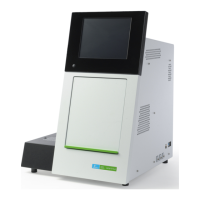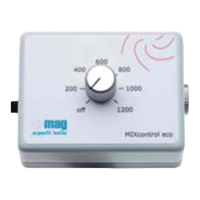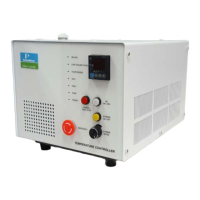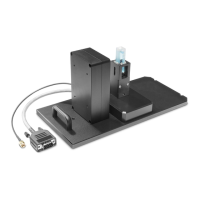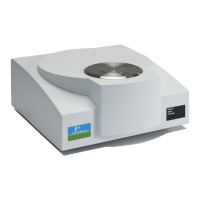Software Reference 193
V4.2 LabChip GX User Manual PerkinElmer
Peak Find Tab (Continued)
This window contains the following options:
Table 1. Plate Peak Find Settings
Plate
Settings Function
Minimum
Peak Height
Specifies the height limit below which a peak is not detected. For
each peak, the difference between the peak start time and the peak
apex must be greater than the Min Peak Height value.
Minimum
Peak Width
Specifies the limit (in seconds) for the peak width. Peaks narrower in
time than this value are not detected.
Slope
Threshold
Represents the amount of change in absorbance units over time
required to indicate that a peak has occurred. This setting is used to
detect the start and end of a peak. Increasing this setting may cause
broad rolling bumps to be ignored or merge multiple bumps into a
single peak. Decreasing this setting will broaden the peaks’ width and
potentially pick up broad bumps as peaks. See “Understanding Peak
Finding” on page 108 for more information.
Inflection
Threshold
Represents the value that the slope minimum must be below to
trigger a splitting of the peak. As the threshold is increased, more
peak splitting occurs. See “Understanding Peak Finding” on
page 108 for more information.
Start Time Specifies the time after the start of a run when the first peak will be
detected (any peaks appearing before this time are ignored). The Gel
and Graph views will not plot data earlier than this time.
End Time Specifies the time after which peak detection stops. The Gel and
Graph views will not plot data beyond this time.
Filter Width Specifies the width, in seconds, of the low pass filter to be convolved
with the data. The width of this filter should be about 6 samples wide
(i.e. 0.1 sec for 60 Hz sampling). If this setting is too large, peaks will
develop spurious side lodes (ringing) due to over-filtering.
Baseline
Plateau
Specifies a baseline selection parameter for peak finding. The signal
is at baseline whenever the slope of the data is less than the slope
threshold setting (positive or negative) for longer than the Baseline
Plateau. This rejects brief, low slope areas such as in between non-
baseline-resolved peaks.
Polynomial
Order
A filter algorithm is used to filter the data, increasing the signal-to-
noise ratio. The data is convolved with a polynomial of this order to
produce filter data and a filter slope and decrease the background or
baseline noise and/or spikes in the signal. This value is read only.
